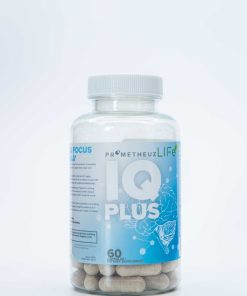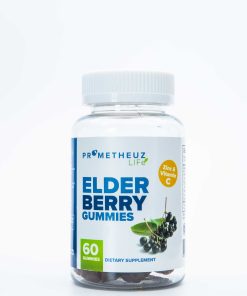Nutrition
THE ROLE OF YOUR MENSTRUAL CYCLE ON EXERCISE AND NUTRITION
Women are truly exceptional when it comes to physiology. Every 24 to 32 days the female body goes through a series of four distinct events known as the menstrual cycle. While many are aware of the common premenstrual symptoms such as pain, acne breakouts, water retention and cravings, not many are aware of the effect it can have on strength, metabolism and your workout regime in general.
Before we can understand the effect the menstrual cycle has on your exercise regime we need to understand the importance of the hormones that regulate this process as well as the different phases of the menstrual cycle. During the menstrual cycle the body undergoes hormonal changes aimed at the success of maturing, fertilizing and implanting an egg into the uterine wall.
The uterine wall thickens to provide nutrients to this egg, and if pregnancy is not successful the thickened wall is expelled causing menstruation. Day one of the cycle starts at the onset of bleeding when this thickened wall is expelled. This usually lasts between 3 – 7 days.
The remainder of the 28 days are split into 2 distinct phases. The follicular phase and the luteal phase. The follicular phase being the first half of the cycle, followed by the luteal phase in the second half of the cycle. The luteal phase officially begins when you ovulate or in other words when an egg is released from the ovaries.
Once we have a basic understanding of the different phases we need to consider the two important hormones that play a key role. Estrogen and progesterone are the key hormones that fluctuate and vary throughout the menstrual cycle. In the early follicular phase estrogen and progesterone are both quite low, but as the body enters the later follicular phase estrogen begins to increase rapidly and reaches its peak right before ovulation. Following ovulation estrogen will decline, rise slightly during mid luteal phase and then dramatically drop again during late luteal phase.
This drop in estrogen during late luteal phase will be the week before the onset of your period. In contrast progesterone will remain low during the entire follicular phase and then drastically increase after ovulation in the early luteal phase. Progesterone peaks during mid luteal phase and then follows a rapid drop in late luteal phase in sync with estrogen.
Understanding these phases and fluctuating hormone levels in the different phases is key to determining how to adjust nutrition and energy management according to your physiological demands to fit with your exercise regime and be able to manage your metabolism as effectively as possible. Let’s have a look at how these hormones affect exercise and diet.

Estrogen tends to have a bad reputation in the fitness community but this isn’t really warranted since it’s responsible for a variety of positive training implications such as increasing the metabolic rate, using carbs for energy and controlling hunger. Studies have also shown that estrogen can hold anabolic properties by increasing the muscles capacity to grow and repair.
Progesterone is generally attributed as the hormone that makes women feel awful, hungry and lethargic during their cycle and is mostly associated with negative training implications. Some studies have even suggested that it could block estrogen and cause muscles to break down.
A recent study conducted by Wikstrom – Frisen was done to discover whether using the method of menstrual timing and resistance training could improve muscle growth and strength without increasing the number of sessions. They divided 52 women into 2 groups for four months with one group performing high intensity lower body training during the follicular phase of the menstrual cycle and the other half following the same program during the luteal phase.
The study found that the group training in the follicular phase had a greater effect on muscle mass, strength and power as opposed to the group training during the luteal phase. In short it seems with estrogen increase and progesterone normalized in the follicular phase, women can recover quicker and more efficiently for more working sets and heavier reps.
This creates an ideal environment for muscle growth. So in simpler terms as ovulation starts and estrogen levels peak, your strength levels will be high and you may notice the highest shear force generation capacity during this phase. This could be an ideal time to attempt a personal best! Practically this implies that at the onset of the follicular phase women are the strongest and can tolerate the most volume to maximize gains.
For example the week of your period or week 1 you should do your heavy strength focused workouts with a 6-8 rep range. This will then be followed by higher volume work in the 10 – 12 rep range in week 2 and 3. Then lastly week 4, when you are at your weakest, you can drop back the weight and volume or even consider a deload week that focuses more on cardio based exercise.
Nutritional studies support that the follicular phase is the best time to start on a new nutrition regime since your insulin sensitivity and cravings will be at their lowest levels and the body will be more likely to utilize carbs for energy. Research published in the American Journal of Clinical Nutrition noted that basal metabolic rate decreases during menstruation and proceeds to decline to its lowest point one week before ovulation takes place. This implies that it could be useful to implement carb reefed or loading during the follicular phase to help counteract the decline in resting metabolic rate.
During the luteal phase, or the last 2 weeks of the menstrual cycle, estrogen levels will drop and progesterone will increase causing your body temperature to increase and metabolically energy expenditure will be at its highest meaning your body will start to burn more calories in digestion than normally.
This sounds great for dieting; however appetite increases for every macro nutrient, carb, protein and fat during this phase. With your body temperature higher than normal, you will also experience higher cardiovascular strain and a decrease in time to exhaustion. This causes your body to shift to burning fatty acids for fuel more readily during the luteal phase instead of muscle glycogen or carbs as we discussed earlier in the follicular phase. In short you will fatigue a lot quicker.
More total calories are burned throughout the luteal phase but the real application of this comes down to what the goals are for each individual as well as their ability to cope with dietary restrictions during the time at which cravings are at its highest. If you are looking to start a new diet regime during the luteal phase more than likely you are setting yourself up for failure!
The start of the follicular phase, when you start your period, you can consider starting a diet when appetite isn’t quite as high. So to break it down very simply the week leading up to your period you will be more inclined to have cravings as opposed to the week of your period when cravings are more manageable.
Starting a diet on the onset of your period might make it easier to get over the initial hump of starting a new diet and when the cravings start at week 3 you will be less inclined to fall off the wagon as you have already seen results.

Overall the female body is very complex and different to that of a man and should be treated as such. Loads of information and research has recently been focussed around this specific topic catered to help women achieve the best out of diet and training. So if you are focussed on nutrition and exercise and would like to delve a little deeper in the world of training and nutrition specifically for females, I would highly recommend The Women’s Book by Lyle MacDonald that draws a lot of inspiration to this article.






